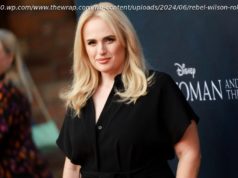From production designers to caterers to limo drivers, it takes a well-coordinated team to deliver the Oscars telecast.
Talk about pressure. More than 30 million people in the U. S. alone tune into the live broadcast of the Academy Awards ceremony every year. Industry insiders and movie fans alike have their eyes trained on the nearly four-hour telecast — a hugely complex undertaking. And anything can go wrong, as proved by last year’s infamous best picture blunder.
Pulling off such a challenging show requires the dedicated effort of hundreds of employees of the Academy working together to ensure that guests arrive on time, the program stays on schedule and the evening runs smoothly. The men and women behind the scenes at the Oscars are just as crucial to the success of the show as the crew of a major Hollywood production.
“Between pre-show, arrivals, the main show and international, there are upwards of 800 people working there,” says Oscars supervising producer Rob Paine. “And that doesn’t even include security and caterers and support staff.” Paine has more than two decades of experience working on the Oscars, and it’s his responsibility to oversee the details of the show. That makes him a “fireman” for the night, he says.
“There are security issues… accidents onstage … empty seats in the audience during the show that need to be filled,” he explains. “An endless variety of issues can come up.”
Kim Tammy, senior manager of operations and awards logistics, calls it a bit crazy behind the scenes. “There’s always something,” she says. Tammy remembers the night in 2013 when a toilet began to overflow in the first-floor lobby of the Dolby. “We had guests arriving, and I was running back and forth, hearing rumors that it was flowing into the house.” It wasn’t, thankfully — and the mess was soon cleaned up. “There’s no way to prepare for things like that,” she says. “But we handled it.”
Of course a lot happens well in advance of the big night. Derek McLane, production designer for the ceremony, starts sketching out ideas for visuals as early as the previous spring, and gets down to work in earnest through summer. “The intensity picks up the closer you get, and we start to hone in on the final looks in September or October,” he notes. The process is much more rushed, he says, than the Broadway shows he’s accustomed to, which have their design locked in more than six months before opening.
By necessity, he explains, much of the design work is done far before nominations come out. The elements that need to be designed with nominees in mind — the original song performers, for example — have to be put together with great speed once the titles are announced.
For limo coordinator Norm Kinard, Oscar night is a matter of careful advance planning and a lot of work the day of the show. He must arrange shuttles to and from the theater for staff, deal with valet parking for more than 500 cars and coordinate the arrival and departure of 650 limos — all with seamlessly precise timing.
Weather, traffic, street closures and delays all have to be considered. Kinard works with the city of L.A., the Department of Transportation and the LAPD to arrange routes for travel, shutting down Hollywood Boulevard and many of the surrounding streets, from Highland Avenue to La Brea Avenue. “It’s a 24-hour day for me,” he says. “There’s a ton of moving parts and a lot of making sure everything is exactly in place.”
Inside the theater, there’s Randy Thomas, nine-time announcer for the Oscars and the first female in that role in the Academy’s history. Thomas sits behind the Dolby in a truck with key crew that’s in the show’s busy production compound. It’s her job to introduce each presenter and read what’s called winner walk-up copy — “vocally escorting winners to the stage by giving an interesting factoid about them,” she explains.
“The announcer’s job is to move the show along in an elegant and timely fashion,” Thomas adds. She watches the broadcast and waits to read winners as they’re announced — and as was shown last year, when she read the best picture walk-up copy for “La La Land,” she doesn’t know who will win until the name is read out loud. “That’s the beauty of live TV,” she says. “You never know what can happen.”
For her part, Thomas credits the success of the ceremony to the hard work of the vast Oscars team. “It takes a city to make this show work,” she says. “It’s humbling. Everyone on the team rises to their best work for this show.”






